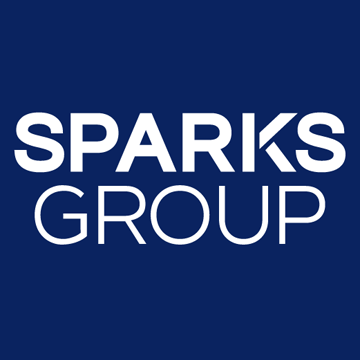
Maintaining productive and profitable business operations is a common challenge for companies in the tech space. Often, the problem stems from where it all begins: the talent acquisition process. From inefficient hiring timelines that deter top talent to not recruiting the right people, all these hiccups in the hiring process result in lost revenue and productivity.
These hiring challenges include but aren’t limited to technical roles such as computer and analyst programmers, configuration managers, and chief information security officers. They also affect administrative, support, and project management roles, such as IT support specialists and administrators, help desk technicians and computer scientists.
So, what can a business do to improve its productivity and hire high-quality talent quickly and at scale? Let’s identify what challenges tech companies experience during hiring that lead to decreased productivity.
Talent lacks the right skills to help improve productivity
One strategy a technology business can use to improve productivity is hiring candidates for skills rather than roles, including non-technical skills.1 Whether hiring for technical or administrative roles, candidates looking to work at a fast-paced tech company need non-technical skills like critical thinking, innovative problem-solving, and adaptability.
An Indeed article shares ways individuals can improve adaptability, but the strategies can also apply to employers, such as to2
- Keep employees informed of changes at work, such as adding team members, introducing products, and implementing new processes.
- Make sure your employees understand your business goals and have personal growth goals.
- Provide employees with regular feedback and encourage them to ask for feedback.
For instance, software and database developers need to be able to adapt to changing project requirements. A lack of understanding about new developer tools and user needs can hinder project efficiency.
One solution is implementing a user-centric approach in your business operations. This helps your development team better prioritize user needs and, in turn, be more productive. Development teams who prioritize this user-centric approach have 40% higher organizational performance, according to a 2023 Google Cloud & DevOps Research and Assessment report.3
Another solution is to implement training time in your organization for employees to learn new technologies and skills. A 2022 Stack Overview survey found that a 50-person developer team had 333-651 hours lost per week across their team from time spent searching for answers and solutions to their problems.4
Candidates seeking non-technical roles like IT project and program management or coordination need skills that support business productivity, such as being able to:
- Establish infrastructures to prevent issues with project organization, management, timelines, and workflows.
- Understand innovative technologies that can make the organization more productive.
- Work in an agile workflow to contribute to business productivity.
Slow hiring times deter highly qualified candidates
Tech companies miss out on highly qualified talent if they take too long during the hiring process before giving them a job offer. According to a 2023 SHRM survey, it takes employers an average of 44 days to hire.5 To get more insight into average hiring times, we polled our LinkedIn followers who are interested in expanding their admin departments. When asked what they expect their average days to hire to be in 2024, there was a tie at 34% for either two weeks or less or two weeks to a month.
Top candidates have the right technical and non-technical skills to improve business productivity. If a company can’t extend a job offer in a timely manner to their leading candidate, they must go down their list to find someone else. All the candidates should possess the right technical skills, but applicants further down the list may not have the desired non-technical skills, contributing to a lack of business productivity.
To prevent missing out on top candidates, these are a few strategies to lower your average time to hire:
- Reassess your current interview strategy. For example, limiting the number of people who participate in the interview helps the process take less time.
- Focus on vetting candidates for your non-negotiable technical and non-technical skills. This will make narrowing down your list of applicants easier and more efficient.
- Establish a clear hiring timeline and stick to it. From the date you post the job opening to the date you receive an accepted job offer, what is the ideal number of days?
Difficulty finding quality candidates who meet security clearance requirements
Along with finding candidates with the right skills, government-specific software providers and defense software companies face the unique challenge of finding people who meet security clearance requirements. Slow hiring times go hand-in-hand with security clearances since there’s additional time to vet the candidates and make sure they’re trustworthy individuals.
In 2024, there’s still predicted to be a lot of competition for security-cleared talent, according to the Federal News Network.6 In the fiscal 2023 fourth quarter, the Federal News Network reported that top-secret investigations took an average of 115 days to conduct, which is an increase of 84 days from this time range in 2022.7
There are three main types of security clearances, as well as two main types of vulnerable information that people with security clearances handle:
Security clearance types:
- Confidential: Information would cause some damage to national security if leaked.
- Secret: Information would cause serious damage to national security.
- Top Secret: Information would cause grave danger to national security.
Vulnerable information types:
- Controlled unclassified information: Data that can be accessed by authorized employees but can’t be redistributed to people who don’t require it for their jobs.
- For official use only: Unclassified information that is exempt from public release under the Freedom of Information Act because it’s not suitable for public release.
Visit our security clearance page for more information on security clearance recruiting.
What can a business do to improve its productivity? Partner with a security-cleared staffing firm with experience in the tech space.
Prioritize strategies like skill-focused hiring and faster hiring timelines to quickly find and place top talent at your tech company to contribute to a productive business environment.
Connect with one of our recruiting experts who have a deep understanding of the hiring process for tech companies, as well as hiring security-cleared talent.
In the meantime, fill out our cost-to-hire calculator to get a better understanding of how long it takes your tech company to hire for technical positions, administrative jobs, and more.
Sources
2Indeed, 6 Important Workplace Adaptability Skills (With Examples), February 27, 2023.
3Google Cloud and DORA, Accelerate State of DevOps Report 2023.
4Stack Overflow, 2022 Developer Survey.
5SHRM, How HR Can Transform the Most Important Page on the Company’s Website, November 9, 2023.
6Federal News Network, Security Clearance Expectations for 2024.






